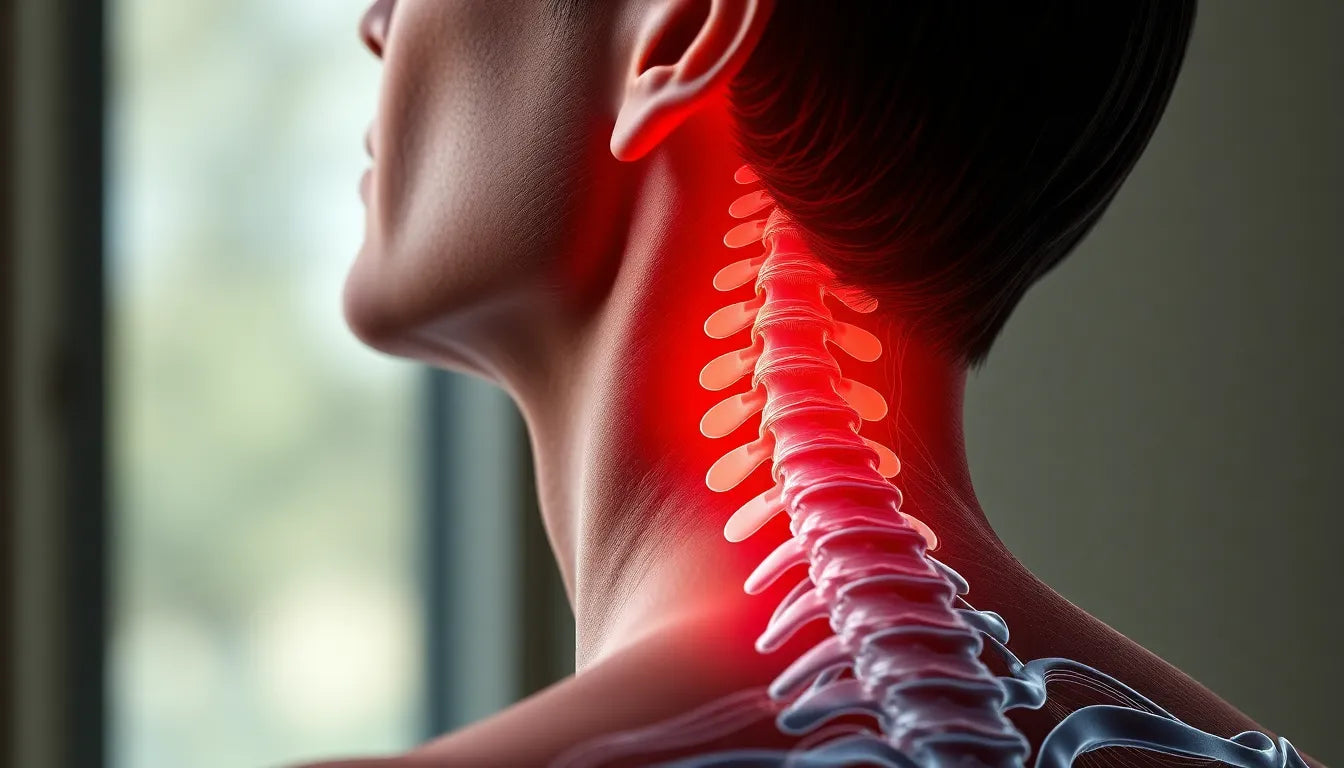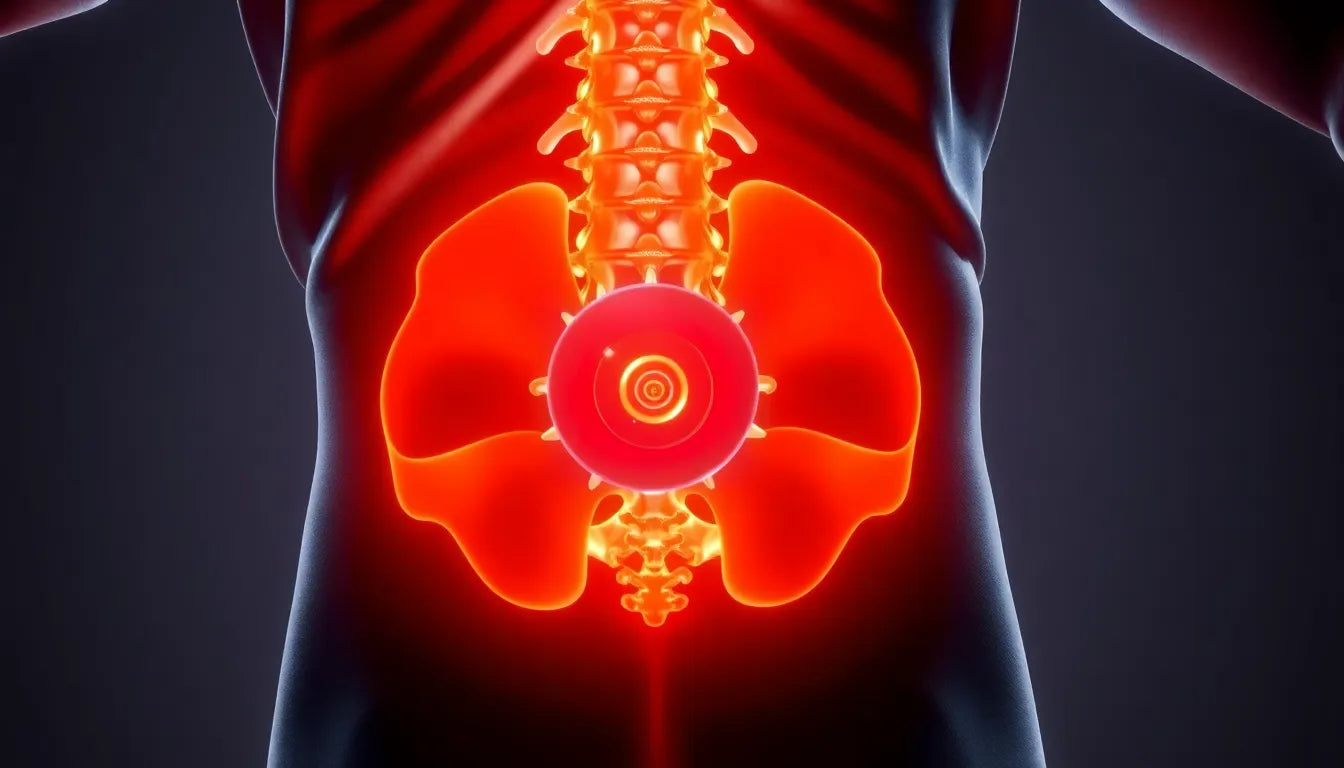Understanding the intricacies of spinal health is crucial, especially when it comes to conditions like herniated discs. Often referred to by alternative names such as slipped disc, bulging disc, or ruptured disc, a herniated disc is a common spinal condition that affects many individuals. In simple terms, a herniated disc occurs when the soft, jelly-like center of a spinal disc pushes out through a tear in the tougher exterior, potentially causing discomfort and a range of symptoms.
Prevalence of herniated discs
Herniated discs are more common than you might think, particularly among adults over the age of 30. As we age, the wear and tear on our spinal discs can lead to this condition, impacting daily life significantly. The prevalence of herniated discs highlights the importance of understanding this condition, not only for those currently experiencing symptoms but also for those seeking to prevent it.
Importance of early recognition and management
Recognizing the symptoms of a herniated disc early is crucial for effective management and to prevent further complications. Early intervention can lead to better outcomes, reducing the risk of chronic pain and mobility issues. By understanding the signs and seeking appropriate medical advice, individuals can take proactive steps to manage their condition effectively.
In the following sections, we will delve deeper into the causes, symptoms, and treatment options available for herniated discs, providing you with a comprehensive understanding and practical advice on finding relief.
Causes and risk factors of herniated discs
A herniated disc can develop due to various factors, with age-related degeneration being a primary cause. As we grow older, the spinal discs naturally lose water content, making them less flexible and more susceptible to herniation. This degenerative process is a normal part of aging, often beginning in one's thirties and progressing with time.
Genetic predisposition also plays a significant role in the likelihood of developing a herniated disc. If you have a family history of spinal issues, your risk may be higher. In addition, lifestyle factors such as carrying excess body weight, smoking, and maintaining poor posture can exacerbate the wear and tear on spinal discs, increasing the risk of herniation.
Traumatic injuries, such as falls or accidents, can lead to a herniated disc by placing sudden and excessive pressure on the spine. Similarly, repetitive movements or improper lifting techniques, often seen in certain occupations, can contribute to the condition. These activities can cause small tears in the disc's outer layer, eventually leading to herniation.
Recognizing the symptoms of a herniated disc
The symptoms of a herniated disc can vary widely depending on the location and severity of the herniation. Pain is a common symptom, ranging from a dull ache to sharp, radiating pain that can affect daily activities. This pain often extends along the nerve pathways, causing discomfort in other areas of the body.
In addition to pain, individuals may experience numbness and tingling sensations, particularly in the arms or legs, depending on the affected nerve. Muscle weakness is another potential symptom, as the nerves responsible for muscle function can be compressed by the herniated disc.
For those with lower back herniations, sciatica is a frequent complaint. This condition is characterized by pain that radiates from the lower back down the leg, often accompanied by numbness or tingling. In contrast, cervical herniations in the neck may lead to symptoms affecting the shoulders, arms, and hands.
Exploring treatment options for herniated discs
Treatment for herniated discs typically begins with conservative approaches aimed at relieving pain and restoring function. Activity modification is often recommended to reduce stress on the spine, along with pain medications to manage discomfort. Nonsteroidal anti-inflammatory drugs (NSAIDs) are commonly used to alleviate pain and inflammation.
Physical therapy plays a crucial role in the treatment plan, offering techniques such as pelvic traction, massage, and stretching exercises to improve mobility and strengthen the muscles supporting the spine. These therapies can help reduce pressure on the affected nerve and promote healing.
For cases that do not respond to conservative treatments, advanced options like corticosteroid injections may be considered to reduce inflammation and pain. In severe instances where symptoms persist, surgical intervention such as a diskectomy might be necessary to remove the herniated portion of the disc and alleviate nerve compression.
Understanding the causes, symptoms, and treatment options for herniated discs is vital for effective management and relief. By addressing these factors, individuals can take proactive steps towards recovery and improved quality of life.
Ergonomic strategies for preventing and managing herniated discs
Preventing and managing herniated discs effectively involves incorporating ergonomic strategies into daily routines. For office workers, maintaining proper sitting posture is crucial. Using ergonomic chairs that support the natural curve of the spine can significantly reduce the risk of disc herniation. Additionally, adjusting the height of desks and computer screens can help maintain a neutral spine position.
Manual laborers can benefit from learning safe lifting techniques, such as bending at the knees and keeping the load close to the body. Supportive equipment like back braces can also provide additional protection during physically demanding tasks. Regardless of occupation, maintaining a healthy weight and quitting smoking are essential lifestyle changes that can reduce the risk of developing a herniated disc.
Pain management solutions for herniated discs
Managing pain associated with herniated discs often requires a combination of ergonomic aids and supportive tools. Products such as lumbar support cushions can alleviate discomfort when sitting for extended periods. Similarly, ergonomic pillows designed to support the neck and spine during sleep can help minimize pain and promote healing.
For those experiencing significant discomfort, using standing desks or alternating between sitting and standing throughout the day can help reduce pressure on the spine. These ergonomic solutions complement medical treatments and can be integrated into everyday activities to enhance comfort and support recovery.
Rehabilitation and recovery
Rehabilitation after a herniated disc diagnosis focuses on strengthening the muscles that support the spine and maintaining proper posture. Home support tools, such as resistance bands and stability balls, can aid in following physical therapy recommendations and exercises. These tools help improve core strength and stability, which are critical for preventing further injury.
During recovery, maintaining proper posture is vital. This includes being mindful of body alignment while sitting, standing, and moving. Ergonomic aids can assist in achieving and maintaining correct posture, ensuring that the spine is well-supported throughout the healing process.
Frequently Asked Questions
What causes a herniated disc to flare up?
Activities that strain the spine, such as heavy lifting, sudden movements, or prolonged poor posture, can exacerbate the symptoms of a herniated disc. It's important to be mindful of these activities and take precautions to avoid aggravating the condition.
Can a herniated disc heal on its own?
Many herniated discs improve over time with conservative treatments such as rest, physical therapy, and pain management. However, severe cases may require medical intervention to alleviate symptoms and promote healing.
How is a herniated disc diagnosed?
Diagnosis typically involves a physical examination and imaging tests such as MRI or CT scans to confirm the presence and extent of the herniation. These tests help healthcare providers develop an appropriate treatment plan.
What lifestyle changes can help manage a herniated disc?
Maintaining a healthy weight, practicing good posture, and engaging in low-impact exercises like swimming or walking can help manage a herniated disc. These lifestyle changes reduce stress on the spine and support overall spinal health.
When should I see a doctor for a herniated disc?
If you experience persistent pain, numbness, or weakness that affects your daily activities, it's important to seek medical advice. Early intervention can prevent further complications and improve outcomes.



